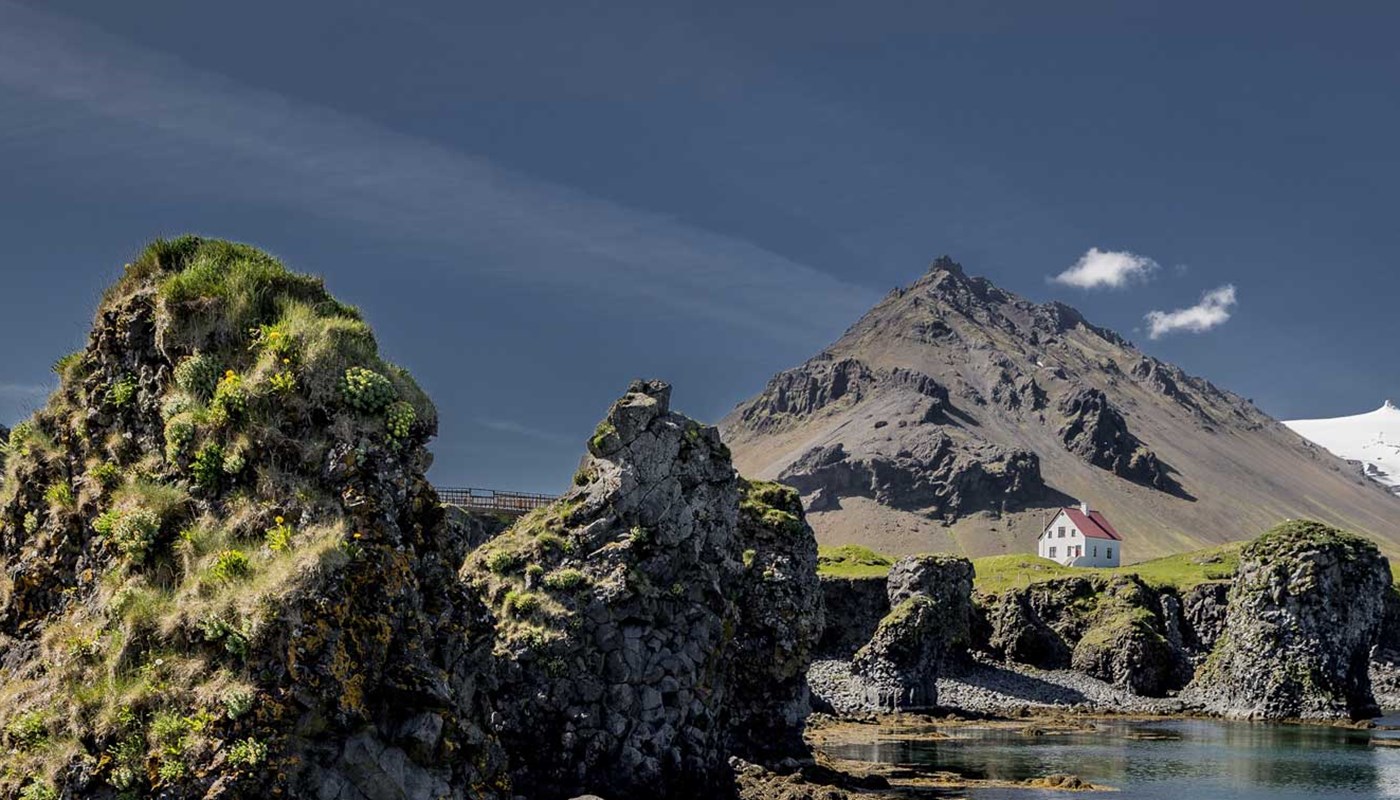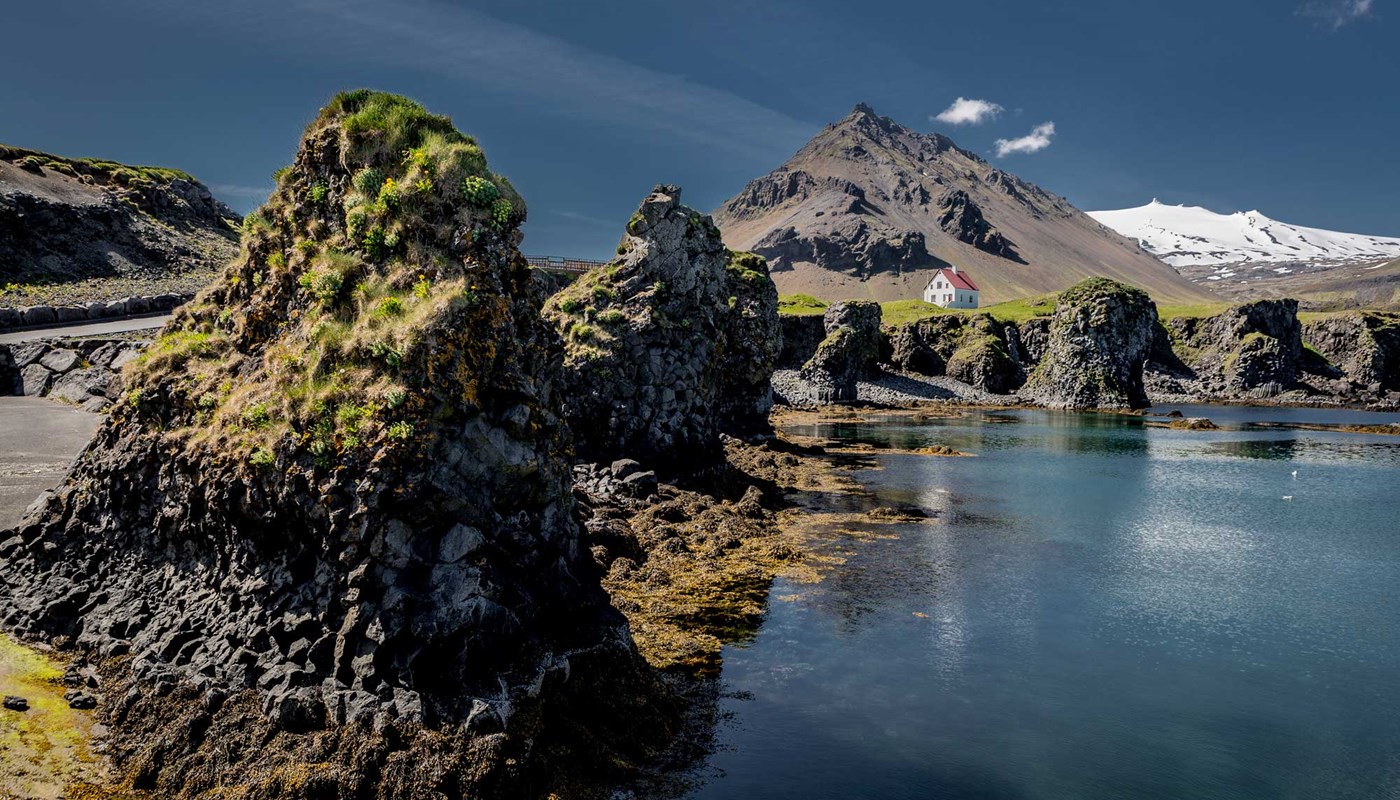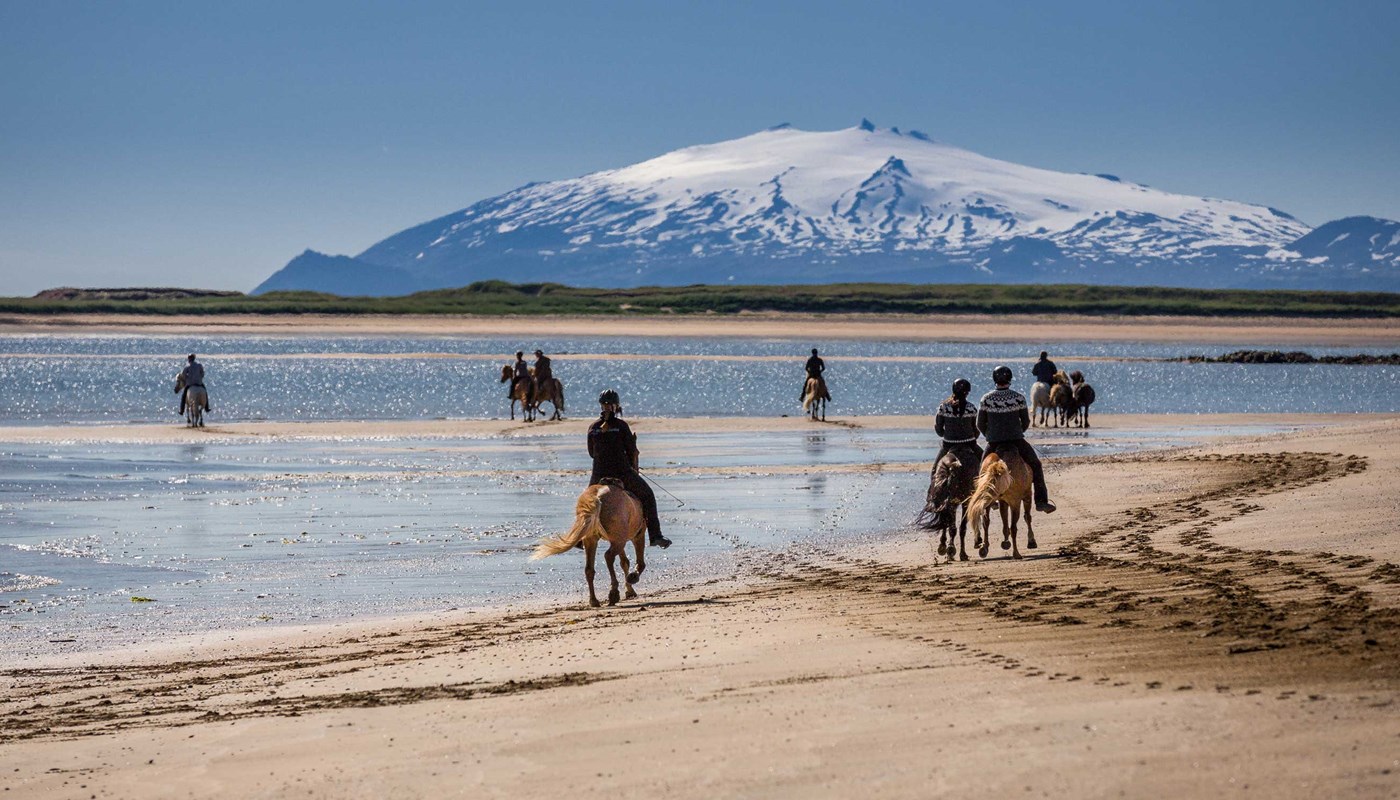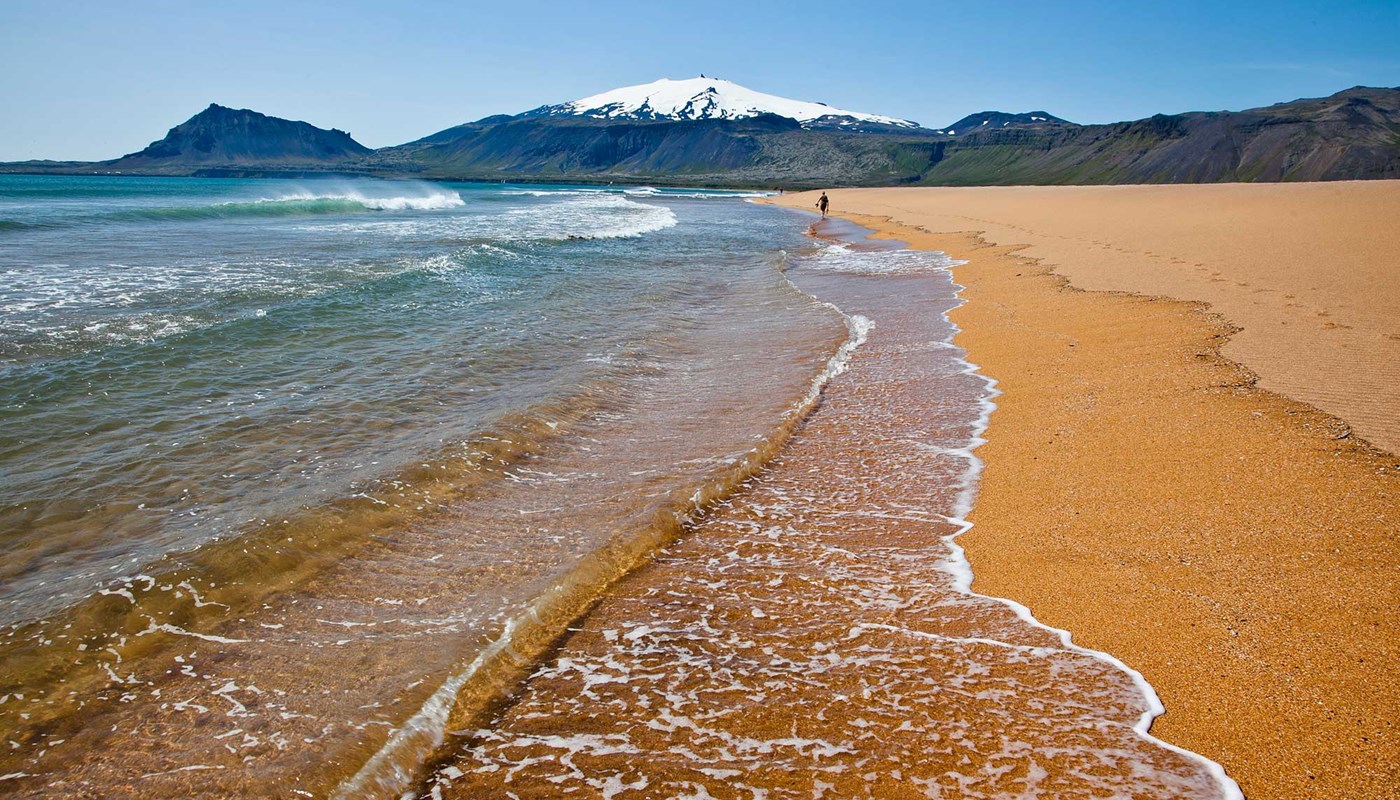The Snæfellsjökull National Park is the first national park that was established in Iceland, the boundaries of which reach out into the sea. Standing at the foot of a volcano and glacier, Snæfellsjökull National Park is the only park that reaches from the seashore to the mountaintops.
Undisputedly the main attraction of the National Park is the Snæfellsjökull Glacier—the beautiful magnet of the western Peninsula. This active volcano, which stands 1,446 m high, provided the setting for Jules Vernes' famous Journey to the Center of the Earth.
Snæfellsjökull glacier is said to be one of the seven great energy centres of the earth, and has been attributed various mysterious powers. The magnificent view from the top extends to Reykjanes Peninsula on the south side and the Westfjords on the north side, as well as over the mountains of Snæfellsnes to the east. Excursions onto the glacier are offered from the village Arnarstapi on the southern side.
The park is perfect for exploring the adventurous world of the ocean, coastline and beach. Although the marine factor is the pride of the park, it is also a marvel for those interested in geology—and especially volcanology. Conditions for bird watching are good; birdlife is abundant both by the coast and in the lowlands.
NATIONAL PARKS IN ICELAND
Þingvellir
Þingvellir is the national shrine of Iceland. It is a key location in Icelandic history as the oldest existing parliament in the world first assembled there in 930 AD. Þingvellir has for this reason been designated a UNESCO World Heritage Site. Besides being a location of historical significance, Þingvellir is also protected as a national park due to its unique geology and natural features.
Vatnajökull
Vatnajökull National Park, established in 2008, encompasses not only all of Vatnajökull glacier but also extensive surrounding areas, including Skaftafell in the southwest, and Jökulsárgljúfur in the north. The park covers 13% of Iceland, making it one of the largest national parks in Europe.






